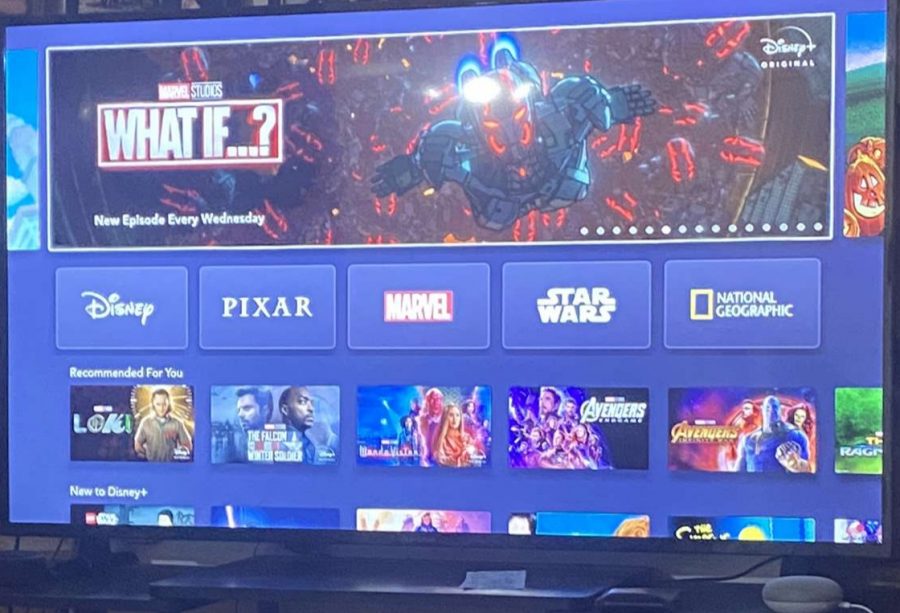Superhero movies currently reign at the box office with popular franchises like the Marvel Cinematic Universe and the DC Extended Universe. However, superhero movies were not always as common and popular as they are now.
The first movie series based on a DC Comics hero hit the theaters in 1941. “Adventures of Captain Marvel” gained a positive response from critics, as it was the first in its territory. After that success, the next project titled “Batman” was a 15-part series released in 1943. As the first interpretation of the Caped Crusader, this serial was a success and was popular enough to get a sequel: “Batman and Robin.” A serial interpretation of the Man of Steel was made in 1948 and also got a sequel.
On the other hand, the first movie serial based on a Marvel Comics character was “Captain America,” which hit the theaters in 1944. This take on the now-popular Captain America also gained a good response from critics, but it was the only big screen adaptation of a Marvel character for another 40 years. All of these projects didn’t have many viewers other than serious comic book readers.
However, DC continued thriving in the movie and TV industry for a while. As the serial format lost interest of viewers, movie industries turned to movies and TV series. Superman and Batman stayed popular on TV shows until the release of 1979’s “Superman: The Movie,” starring Christopher Reeve. This the first big superhero project to be popular across the world and appealed to normal moviegoers.
The 1980s had their fair share of hits and misses. “Superman II” was a hit in 1981 but the two following movies in the Superman franchise were disappointing and Superman did not see the theaters again for more than 20 years. Michael Keaton’s “Batman” was a success in 1989, and that success carried on to its sequel “Batman Returns” in 1992. Just like Superman’s third and fourth movies, the Batman franchise’s third and fourth movies also lost traction after negative reviews and underperforming at the box office.
On the other hand, Marvel Comics still has not had any movies made exclusively from their characters since 1944’s “Captain America.” The drought of Marvel movies was quenched with the release of “Howard the Duck” in 1986 and the release of “The Punisher” in 1989. Both of the movies had negative reviews and bombed at the box office, with “Howard the Duck” ranked as one of the worst movies of all time. With these failures on their hands, Marvel sold off movie rights of some of their characters to different companies. Little did they know their fate would change in 20 years.
New Line Cinema bought the film rights for the hero Blade from Marvel at that time. Starring Wesley Snipes, “Blade” hit the theaters in 1998 and became an unexpected success. This marked the beginning of the success of Marvel movies.
The 21st century began with Fox Studios’ “X-Men,” which was also bought from Marvel. “X-Men” was a huge success and made people more confident in Marvel’s characters. After “X-Men,” Tobey Maguire’s “Spider-Man” was also a blockbuster in 2002 and broke box office records. These successes were followed by more successes including “Blade II,” “X2” and “Spider-Man 2.” Marvel movies also had their fair share of failures during this time, including “Hulk,” “Daredevil,” “Fantastic Four” and “Ghost Rider.” These failures did not matter because Marvel established itself as a name brand.
On the other side of the comic book industry, DC Comics rebooted the Batman franchise with Chirstopher Nolan’s direction and starred Christian Bale as the Caped Crusader in 2005’s “Batman Begins.” Audiences and critics alike loved the more dark and realistic take on Batman. “Batman Begins” was followed by 2008’s “The Dark Knight” and 2012’s “The Dark Knight Rises.” This trilogy is still considered to be one of the best film trilogies of all time because of its themes, acting and direction. Heath Ledger even posthumously won an Oscar for Best Actor for his role as the Joker in “The Dark Knight.”
The biggest turning point in the superhero movie industry was the release of 2008’s “Iron Man,” starring Robert Downey Jr. as Tony Stark, a beloved role in many moviegoers’ hearts. This movie marked the beginning of the famous Marvel Cinematic Universe (MCU).
The MCU currently consists of 25 interlocked movies and four main TV shows and counting. Almost all of these projects broke records in some way and were positively received by critics and audiences. Some of the most popular of these projects include “Avengers,” “Guardians of the Galaxy,” “Captain America: Civil War,” “Black Panther,” “Avengers: Infinity War” and “Avengers Endgame.”
Junior Josh Thomas is an avid movie watcher and enjoys the MCU because of its interconnectivity. “I enjoy the MCU because it’s a fun universe full of infinite possibilities. It also consistently delivers stories that have a fine line between comedy and seriousness and connect with each other in multiple ways that keeps me wanting to keep watching,” said Thomas.
Despite all this critical acclaim, the MCU is often discredited for following the “Marvel Formula” for all of its projects. The Marvel Formula is the storytelling technique that most Marvel films use. The Marvel Formula consists of the villain being similar to the hero, a powerful item, cheesy one-liners and the stereotypical “hero’s journey.” Although many people have grown used to this formula and like it, some people think that it is a disgrace to cinema to keep repeating the same thing over and over again.
Junior Charles Budan, who watches and analyzes movies in his free time, said that the Marvel Formula is not something to be proud of. “I think that the Marvel Formula has had an overall negative impact on not just comic book movies but on cinema as an art form,” Budan expressed.
The MCU is giving its best effort to refrain from the Marvel Formula with projects like “WandaVision,” a sitcom on a superhero’s suburban life.
Seeing the growing success of the interconnected MCU, DC tried to replicate MCU’s success in 2013 with the release of “Man of Steel” as a reboot of Superman. The film received mixed responses but still garnered enough attention to continue the franchise. It was followed by 2013’s “Batman v Superman: Dawn of Justice.” The movie was a box office failure and gained negative responses. The same happened with 2017’s “Justice League.” Both movies were rushed and introduced too many characters too quickly. However, there were successes in the DC Extended Universe.
“Wonder Woman,” “Aquaman” and “Shazam!” were instant hits and garnered good reviews from audiences and critics alike. The irony is that “Aquaman” and “Shazam!” were the highest grossing films in the franchise yet they still followed the Marvel Formula. This goes on to show how much the audiences are used to this formula and enjoy it. The most recent movie of the DCEU was the James Gunn directed “The Suicide Squad.” The movie earned positive reviews from critics and audiences but failed to do well at the box office due to a simultaneous release on HBO Max and COVID-19.
DC has also experimented with stand alone movies and found great success in them. In 2019, Joaquin Phoenix’s “Joker” was a prime example. The movie was the highest grossing R-Rated movie of all time. Along with the box office success, “Joker” also won a couple of Oscars, including one for Phoenix as Best Actor. A primary reason this movie was such a success was due to the dark and pessimistic tone that the movie utilized.
Following the Joker’s success, more studios are taking darker approaches to the superhero genre. Some of these examples include the Amazon Originals’ “The Boys” and “Invincible.” Both of these shows are parodies of modern day superhero movies.
“The Boys” follows vigilantes that want to dethrone corrupted superheroes from seats of power. This project is realistic because there would be very few people in the world that actually follow the popular Spider-Man motto, “With great power comes great responsibility.” It was really interesting for people to watch superheroes do wicked things and get away with them.
“Invincible,” on the other hand, is an animated show that shows teenager Mark Grayson following in his father’s footsteps to become a superhero. This show hits on many points on what it means to be more powerful than everybody around you and discusses very dark topics. Along with dark themes, “Invincible” also contains very gory scenes.
Both these shows have gained amazing critical response, showing that a new wave of dark superhero content is approaching. Budan is excited to see this change.
“I think this is a positive change and I thoroughly enjoy the fact that we are seeing more unique and daring projects in this genre. I think that the success of these projects will bring us more unique and artistic portrayals of superheroes, which will be a much needed boost to the genre after the monotonous and bland streak of superhero films lately,” Budan exclaims.
The superhero genre has evolved from more than just serials to movies. They became something that almost everybody watches and enjoys. DC Comics started something that was never-ending by releasing “Adventures of Captain Marvel!” Many different movies and shows followed that, many of which are still cherished today. Marvel made an impact on the world by releasing the MCU, which is a household name at this point. With these movies being as dynamic as they are, viewers will have to keep an eye out for how this genre keeps changing.









